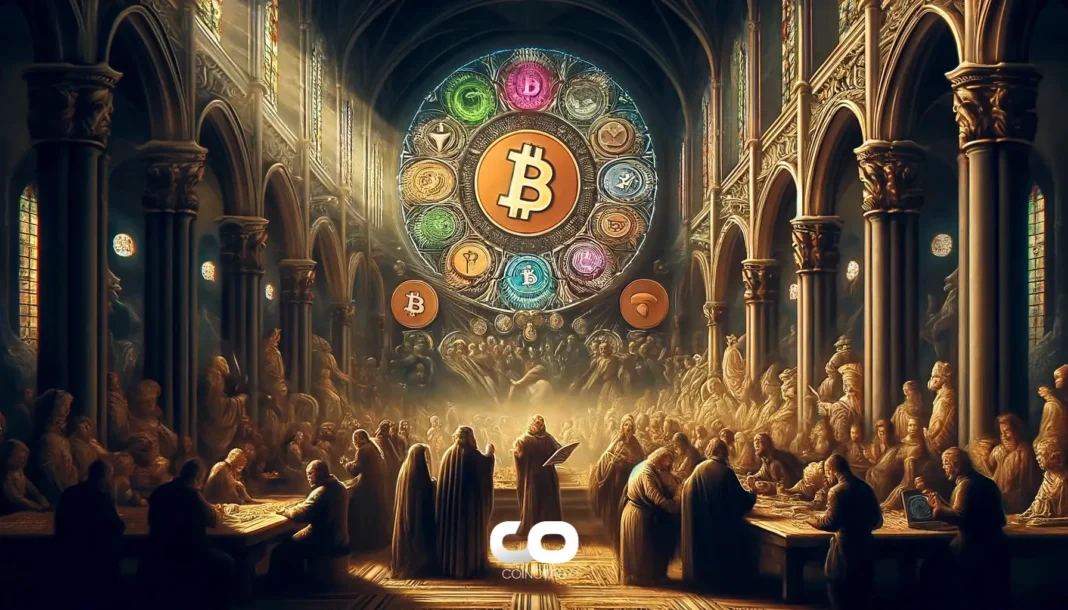-
Former President Donald Trump’s proposal to include Bitcoin in a U.S. sovereign wealth fund has sparked significant debate about the future of national financial strategy and digital assets.
-
While Bitcoin’s appeal as a decentralized asset is undeniable, experts argue that the U.S. should prioritize building blockchain infrastructure over merely accumulating cryptocurrency reserves.
-
According to COINOTAG, “The real opportunity lies in developing platforms that integrate digital assets into the financial system, rather than stockpiling volatile cryptocurrencies.”
Explore why the U.S. should focus on blockchain infrastructure and stablecoins instead of Bitcoin reserves to maintain global financial leadership in the digital age.
Rethinking National Reserves: Why Bitcoin Alone Isn’t the Answer
The idea of incorporating Bitcoin into U.S. sovereign wealth funds has captivated many, but it overlooks critical financial realities. Bitcoin’s price volatility and limited acceptance as a medium of exchange make it unsuitable for the traditional roles of strategic reserves, which include stabilizing the economy and settling international obligations. Moreover, a heavy reliance on Bitcoin could inadvertently signal diminished confidence in the U.S. dollar, potentially undermining the dollar’s status as the world’s reserve currency. Maintaining global trust requires more than asset diversification; it demands strategic foresight and infrastructure development that supports long-term financial stability.
The Limitations of Bitcoin as a Strategic Reserve Asset
Bitcoin’s decentralized nature and resistance to government control are often cited as advantages. However, these traits also contribute to its unpredictability and regulatory challenges. Strategic reserves must be reliable and liquid during crises, qualities that Bitcoin currently lacks due to its price swings and nascent ecosystem. Additionally, geopolitical implications arise if the U.S. were to amass significant Bitcoin holdings, potentially provoking rival nations to question America’s monetary policy and financial leadership. Thus, Bitcoin’s role as “digital gold” remains aspirational rather than practical at this stage.
Building Blockchain Infrastructure: The Key to Digital Financial Leadership
Rather than focusing solely on asset accumulation, the U.S. should invest in creating a robust national platform that integrates blockchain technology into its financial system. This approach mirrors the early internet era, where success belonged to those who built scalable platforms rather than merely owning digital assets. By fostering trustworthy exchanges, secure custodial services, and efficient on- and off-ramps for cryptocurrencies, America can export its core values of transparency, innovation, and rule of law to the burgeoning digital economy. This infrastructure will enable not only Bitcoin but also emerging decentralized finance (DeFi) applications to flourish under American leadership.
Expanding the Digital Economy Through Infrastructure
Current trends demonstrate the growing adoption of digital finance in everyday life. Millions of Americans engage with cryptocurrencies beyond speculation, utilizing them in sectors like entertainment and gaming. For instance, the rise of crypto-accepting online casinos showcases how digital transactions offer faster, cheaper, and more private alternatives to traditional payment methods. This shift underscores the urgency for the U.S. to lead by building the necessary infrastructure that supports these innovations, rather than relying on speculative asset holdings.
The Strategic Role of Dollar-Backed Stablecoins
Dollar-pegged stablecoins represent a transformative opportunity to enhance America’s global financial influence. These digital tokens combine the stability of the U.S. dollar with the efficiency of blockchain technology, enabling faster and more inclusive cross-border payments. Properly regulated stablecoins can extend the dollar’s reach to unbanked populations worldwide, offering a competitive edge over traditional banking systems. However, regulatory clarity and consumer protections are essential to foster trust and widespread adoption. While some regions may resist dollarization, stablecoins can coexist with decentralized assets like Bitcoin, providing a diversified digital financial ecosystem.
Balancing Innovation and Regulation for Sustainable Growth
The U.S. has historically excelled by creating an environment where innovation thrives alongside prudent regulation. Applying this principle to digital finance means allowing companies to experiment with blockchain, stablecoins, and other technologies within a clear legal framework. Striking the right balance is critical: excessive regulation risks driving talent and capital abroad, while insufficient oversight could erode trust. By fostering an open, transparent, and innovation-friendly ecosystem, the U.S. can offer a compelling alternative to authoritarian digital currency models emerging globally.
Conclusion
While Bitcoin’s inclusion in national reserves is an intriguing concept, the path to sustained financial leadership lies in building comprehensive blockchain infrastructure and promoting stablecoin adoption. By focusing on platform development and smart policy, the U.S. can maintain its economic influence and shape the future of digital finance. This strategic approach ensures America remains at the forefront of innovation while safeguarding the integrity of its financial system.







